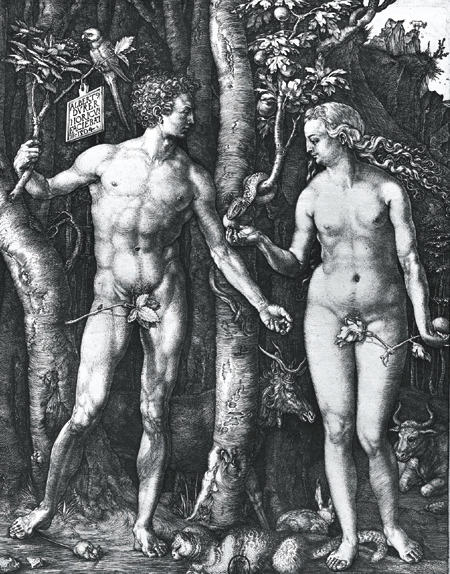Image Details

Giraudon/Art Resource, NY
With a subtle smile, Eve willingly takes the fruit from the serpent in Albrecht Dürer’s “Adam and Eve,” or “The Fall of Man” (1504). Adam’s hand mirrors Eve’s, with a distinctly sexual twist: A crude symbol of sexual intercourse referred to as the “fig,” Adam’s gesture would have been recognized as obscene by Dürer’s contemporaries. Adam’s and Eve’s gestures connote a link between transgression and sexuality. The engraving underscores the widespread influence of the pseudepigraphical accounts, which emphasize the seductiveness and sinfulness of Eve. In the Genesis account, by contrast, the Fall is not sexual in nature, and a link between sin and sex is never made.
The cat and mouse in the foreground heighten the scene’s sexual intimations: The cat, which in art has traditionally denoted lust, is waiting to spring upon the mouse as soon as the first couple bite into the fruit. In this way, Dürer suggests that the transgression of Adam and Eve unleashed violence and sin in the world.
